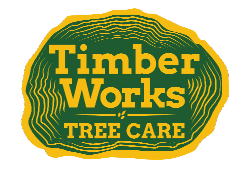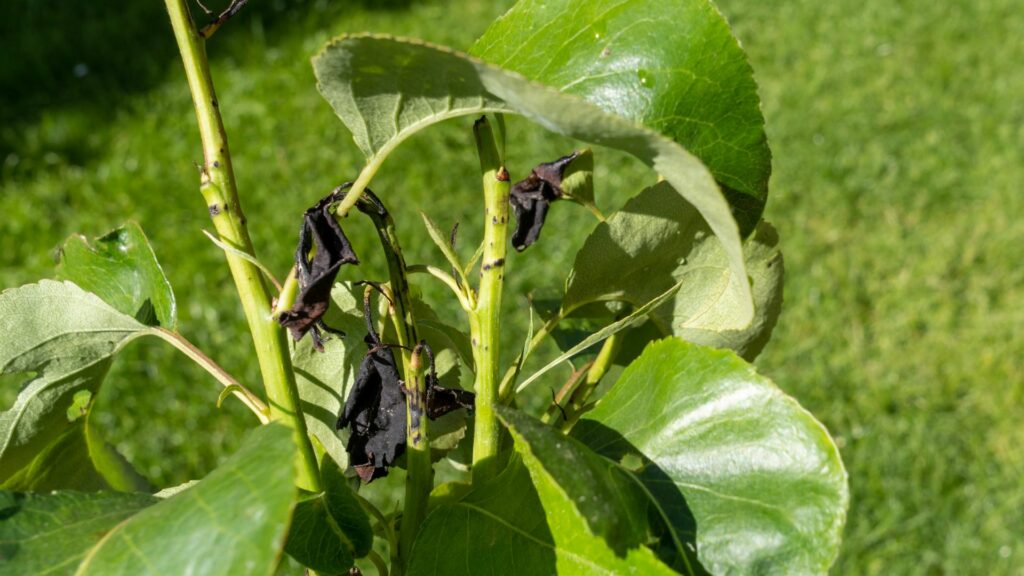Among the tree diseases that appear in Virginia, fire blight is notorious due to its swift and fatal effects. The disease strikes during the spring and affects dozens of species across many states, robbing infected trees of valuable limbs and leaves. Left untreated, the loss of foliage may be fatal—yet tree care specialists can save the dying trees by halting the infection’s spread. Additionally, they can prevent fire blight from infecting nearby healthy trees.
Front Royal, VA, home- and business owners can turn to Timber Works Tree Care for all such services. Our team offers routine tree trimming, emergency tree removal, horizontal grinder rental, and more. We are raising the professional bar for the tree industry through our outstanding customer service and in-depth expertise. To learn more about our options or request a free project estimate, call (540) 692-9606.
Below, we outline some critical facts about fire blight disease and how our professionals treat afflicted trees:
What is Fire Blight?
A common and disastrous disease for pome fruit trees and related flora, fire blight springs from the bacterium Erwinia amylovora. Frequently affected tree species include:
- Pear
- Apple
- Crabapple
- Mountain ash
- Hawthorn
- Pyracantha
- Numerous species in the rose family
The bacteria flourish in warm and humid conditions, which makes Northern Virginia an ideal environment for fire blight. Infections attack through new growths—shoots, fruits, and blossoms—which puts young, actively growing trees at the highest risk. Although the disease initially afflicts new growths, it can eventually defoliate an entire tree.
Affected Areas
Fire blight prospers in hot and humid areas, yet it crops up across the US. This disease causes trees to develop cankers that ooze a liquid containing the Erwinia amylovora bacteria, which insects and weather conditions then pick up and spread to other trees. By attacking blossoms or open wounds, fire blight quickly jumps from area to area—though winds and weather will direct its spread and severity.
Common Symptoms
- Oozing cankers are a telltale sign of fire blight, as implied above. Their watery and light-tan discharge will darken to black after exposure to the air, leaving streaks on infected branches and trunks. Despite that, the cankers are small enough to go unnoticed.
- Shriveled and blackened flowers, shoots, and fruit draw more attention than cankers. Fruit loss and flower wilt may appear on a few branches or spread across a tree. Yet the dead leaves and fruit will cling to the affected branches for an entire season, which creates the “scorched” appearance that coined the disease’s name.
- The wood beneath the bark grows infected and develops pink or reddish-orange streaks, while red flecks appear near cankers. This infected wood eventually dies, becomes brown, and cracks as it dries out. As a whole, the infection spreads from branches to roots and kills the tree.
Management & Prevention

Since fire blight can spread rapidly and affect trees from roots to branches, it requires careful management. Virginia property owners should monitor their trees for symptoms throughout spring and summer. Any indications of fire blight call for a professional inspection by a Timber Works arborist.
As with the other most common diseases and infestations in Virginia, fire blight treatment often entails removing afflicted portions of the tree to prevent the disease’s spread. Doing so requires professional expertise and equipment, as pruning the trees without killing them is a delicate process. Timber Works experts can also advise customers on caring for their trees to make them less susceptible to fire blight and similar diseases.
Front Royal, VA, Homeowners Can Have Dying Trees Removed at Their Convenience
Front Royal, VA, property owners can rely on professionals to handle dying trees. Specifically, they can turn to Timber Works Tree Care for outstanding services and reliable advice. Our certified and insured team members offer tree trimming, stump grinding, forestry mulching, land clearing, and more tree service options. Learn more or schedule an appointment today by calling (540) 692-9606!







